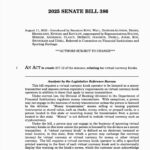Bitcoin’s Historic September Performance
Bitcoin has broken a three-year trend of negative average returns during the summer, but it now faces its worst month, often referred to as “red September.”
September has earned this ominous nickname because it has produced the lowest monthly returns for Bitcoin (BTC), averaging –3.77% over 12 years since 2013. This month is also notable as it marked the time when China enacted significant crypto bans in both 2017 and 2021.
The record for September is heavily influenced by six successive years of losses from 2017 to 2022. However, in 2023, Bitcoin reversed this trend, achieving two consecutive September gains, including its strongest September to date in 2024, when it ended the month with a 7.29% increase.
The poor reputation of September also extends to equities, where it is the weakest month for the S&P 500. During this time, investors typically return from summer with a more cautious outlook, and funds realign as they prepare for the final quarter of the year.
However, the pessimism expressed in September often turns around. Historically, the losses in September have been followed by a recovery in October, also known as “Uptober.” This month has produced gains in six consecutive years for Bitcoin, with only two instances of losses recorded, according to CoinGlass.
The Early Years of Bitcoin
In its formative years, Bitcoin’s pricing was erratic and not extensively monitored. The asset first surpassed $1,000 in 2013, attracting mainstream media coverage and leading to improved archival documentation. CoinMarketCap, an industry-native aggregator, was launched that same year, followed by CoinGecko in 2014.
From 2013 to 2016, Bitcoin experienced an even split in its September performance, achieving two months of positive returns and two of negative returns. This pattern changed in 2017 during the initial coin offering (ICO) boom, when Bitcoin crossed the $1,000 threshold for the second time and then surpassed $2,000 for the first time. This speculative surge prompted China’s central bank to ban ICOs on September 4, marking the start of six consecutive disappointing Septembers. South Korea followed up with its own ICO ban on September 29, as regulators in other regions issued warnings.
The fallout led to what became known as the first crypto winter, which saw numerous ICO tokens collapse. By September 2018, Bitcoin had decreased from its December 2017 all-time high of nearly $20,000 to a price below $7,000. A media report on September 5 claimed that Goldman Sachs was abandoning its plans for a crypto desk, although the bank later labeled the report as “fake news.”
Recent September Challenges and Changes
September 2019 brought another setback with the long-anticipated launch of Bakkt’s Bitcoin futures. Despite high hopes for institutional investment, trading volumes came in low, and the debut was deemed a failure. Three days later, Bitcoin fell from around $10,000 to below $8,000. A report from Binance Research released on September 30, 2019, pointed to Bakkt’s “disappointing start” as a factor in Bitcoin’s price decline.
The subsequent three Septembers were shaped by the circumstances surrounding the pandemic. Though COVID-19 initially supported Bitcoin’s narrative as an inflation hedge, September 2020 saw funds shifting into Ether (ETH) during the “DeFi Summer.”
In September 2021, China banned crypto mining and trading once again. The following year, the collapse of Terra/LUNA in May left significant damage, and September’s 0.75 percentage point rate hike—the fifth out of seven hikes that year—compounded Bitcoin’s struggles.
After enduring six consecutive years of September losses, Bitcoin broke the streak in 2023. A key catalyst was the ruling on August 29, which declared that the US Securities and Exchange Commission’s rejection of Grayscale’s request to convert its Bitcoin trust into a spot exchange-traded fund (ETF) was “arbitrary and capricious.”
This ruling prompted regulators to reevaluate the application and reignited hopes that a US spot Bitcoin ETF would become a reality. The ruling helped propel Bitcoin to a roughly 4% increase for September, aided by the US Federal Reserve holding rates steady following 11 hikes in 12 meetings since March 2022.
Spot Bitcoin ETFs were eventually approved and launched in the US in early 2024, leading to billions of dollars in daily trading volume by midyear. Macro conditions supported this trend when the Fed enacted a rate cut on September 18, 2024, marking the first cut since March 2020.
The launch of World Liberty Financial on September 16, 2024, further fueled political engagement with cryptocurrencies, as it was associated with Donald Trump’s campaign, indicating a higher-level political acknowledgment of digital assets.
Looking Ahead to September 2025
As Bitcoin approaches September 2025, it carries the burden of historical setbacks. This month has consistently proved to be a challenge, characterized by regulatory shocks and tightening cycles impacting investor sentiment.
However, the current landscape appears stronger than in previous downturns. Spot Bitcoin ETFs continue to generate billions in turnover and have emerged as a vital entry point for institutional investment. Over 2025, struggling firms have increasingly turned to Bitcoin treasury strategies to improve their fortunes.
The crypto industry is also buzzing with new speculation from China, with rumors suggesting that authorities might permit stablecoins pegged to the offshore yuan, though no official confirmation has been made yet.
Investor focus remains firmly on the US, where the Fed seems to have pivoted. In late August, Fed Chair Jerome Powell delivered his final Jackson Hole speech ahead of his term’s conclusion in May 2026. This event is closely monitored in global economics, as Fed chairs often utilize it to signal potential policy shifts.
Back in 2022, Powell had warned of “pain” for households and businesses as the Fed continued with aggressive rate hikes. This year, he adopted a more dovish tone, indicating that a “shifting balance of risks” may necessitate a change in the Fed’s approach.
Another reduction is widely anticipated during the Federal Open Market Committee meeting scheduled for September 16-17.



















